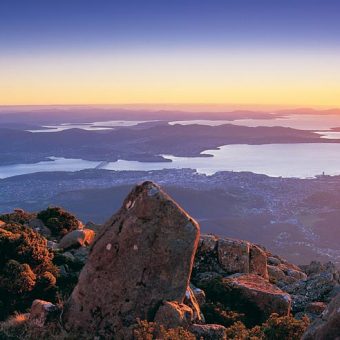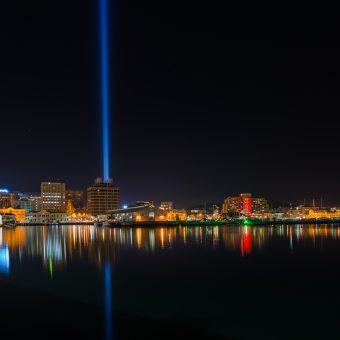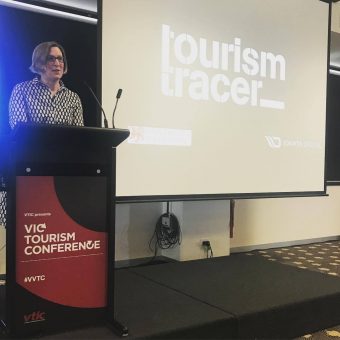Would tourists be interested?
In the planning stages of the Visitor Tracking project we had no idea whether or not approximately 500 tourists would consent to participate. Would tourists allow us to track their every movement?! Would they even give us their attention long enough for us to convince them?! The team was sceptical: after all, we all know what it’s like to arrive after a flight, or series of flights, to a new destination, tired, stressed and keen to get away from the airport as quick as possible and get on with the holiday!
We considered advertising in inflight magazines, but it was too expensive. We considered sending staff to Sydney and Melbourne departure lounges to hand out flyers and “warm up” incoming tourists to the idea – those interested could then present themselves at our counter in the arrivals area at Hobart and Launceston Airports. After careful consideration, this option was dismissed, again because of cost.
How we did it
At the same time we worked on incentives for tourists to participate. What could be really valuable for tourists visiting Tasmania? We all know that internet coverage can be variable across the state. We decided to offer each tourist 3Gb of data on each handset that was given out. We figured that this could be particularly useful for international tourists and for those who are not customers of the major internet provider in Tasmania. Tourists could use the handset to hotspot to their own personal devices. We also decided to offer a shareable, personal, digital map to each tourist showing their complete holiday route on completion of their trip.
 So, we had beautiful DL-sized flyer designed by Naughtee Designs, highlighting the aims of the project and the benefits of participation. We hired personable, confident and skilled postgrad students as our recruiters. We liaised with Hobart International Airport, Launceston Airport and the Spirit of Tasmania, who all generously gave us permission to recruit on site. We conducted site visits to observe passenger flow and behaviour and to determine logistical needs.
So, we had beautiful DL-sized flyer designed by Naughtee Designs, highlighting the aims of the project and the benefits of participation. We hired personable, confident and skilled postgrad students as our recruiters. We liaised with Hobart International Airport, Launceston Airport and the Spirit of Tasmania, who all generously gave us permission to recruit on site. We conducted site visits to observe passenger flow and behaviour and to determine logistical needs.
Why did it work?
We were thrilled when we began recruiting and tourists were keen to be involved! Barely any tourists expressed reservations about being tracked. The free internet data was definitely an effective incentive but equally there was another “hook” that pleasantly surprised us: tourists were keen to be involved in university research which aimed to contribute to improving infrastructure and service provision in Tasmania. Undoubtedly, the skills and ability to form connections of our recruiters played a massive role too: the recruiters created bonds with the tourists and the tourists felt that they were highly valued and part of something exciting. We agree with them!
Entry surveys completed
You can see below where in Tasmania tourists were when they completed the initial entry survey. Strong clusters around the Hobart and Launceston Airports and a steady stream of tourists completing the survey on the Spirit of Tasmania.
Our next blog will focus on visitors’ use of social media



